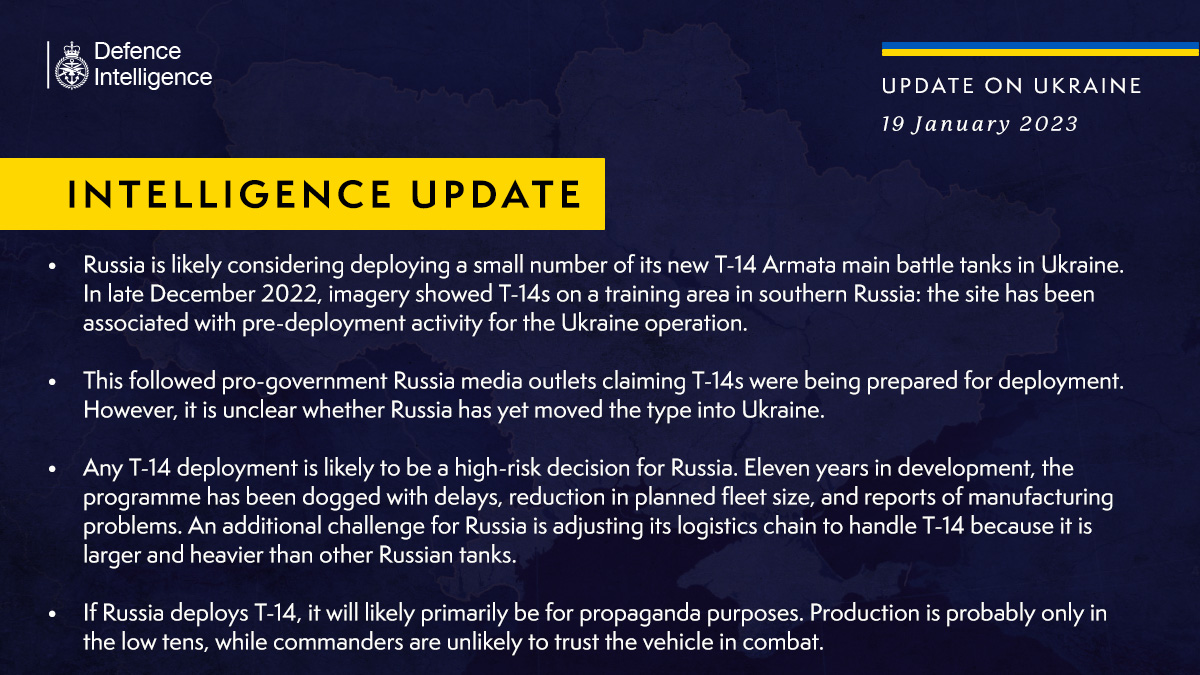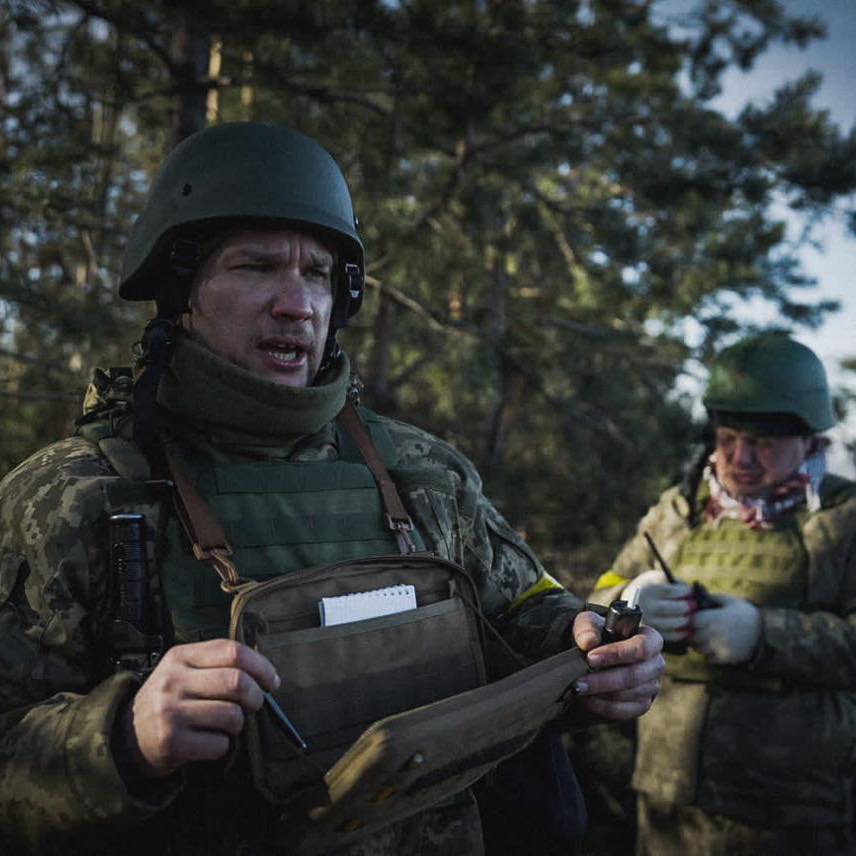
One of the best ways to defeat an adversary is to target their #strategy. To do that, we must understand it. Therefore, in my latest article, I explore Russian strategy, and its various components, for its continuing #Ukraine invasion in 2023. 1/25 🧵🇺🇦 mickryan.substack.com/p/thinking-abo…
2/ The plan for a ten-day lightening conquest of Ukraine, as described in a recent RUSI report, was – in the main – a failure. The Russians did make considerable gains in the south and the east, but their northern campaign was a military disaster. rusi.org/explore-our-re…
3/ Despite battlefield setbacks in the north and northeast of Ukraine, Putin and his defence and intelligence chiefs proceeded to assemble an alternative theory of victory for their invasion and attempted takeover of #Ukraine.
4/First, they prioritised their military operations, avoiding concurrent, multi-front offensives. From April 2022 they focussed on an eastern offensive, allowing them to husband remaining military forces for ops in the Donbas.
5/ Another element of the evolution of Russian strategy after early failures was holding Ukraine’s south, including Ukraine’s seaports. This is a key element of Putin’s evolved strategy because it offered the opportunity to strangle #Ukraine economically.
6/ A 3rd adaptation to Russia’s strategy was accepting that this would not be a lightening war. The evolved Russian strategy appeared to embrace the idea that western populations and politicians would eventually tire of the war. politico.eu/article/zelens…
7/ In September and October 2022, a series of Ukrainian attacks forced the Russians again to reconsider and adapt their strategy. This did not cause a reassessment of Russia’s strategic objectives however. Putin retained his maximalist objective to subjugate Ukraine.
8/ As @MarkGaleotti writes, “Putin’s war aims have remained constant & continue to center on the destruction of Ukraine as an independent state capable of joining the EU or NATO, the breaking of the will of its people to resist & will of the West.” inmoscowsshadows.wordpress.com
9/ But because of Ukrainian battlefield success and the increasing quality of Ukrainian weapons in the last four months of 2022, Russia had to evolve its approach. Over the last few months, Russia has adapted its strategy to achieve Putin’s war aims.
10/ The Russian strategy for its subjugation of #Ukraine is likely to have seven components in the coming year. These are informational, command and leadership, military, diplomatic, national mobilisation, economic and adaptation.
11/ Information Warfare. Russian narratives, including information operations to retain domestic support for the war and influence foreign populations, have been part of Russia’s strategy from before the war. They will continue in 2023.
12/ Command and Leadership. This month, Putin appointed loyalist Gen. #Gerasimov to lead the Russian invasion forces in #Ukraine. According to Michael Kofman, this was the resolution of competing visions with the Russian military for how to win this war. warontherocks.com/2023/01/manpow…
13/ Gerasimov must conduct battlefield offensives, and force a more unified approach between the Russian military and private military companies such as the Wagner Group. He must also oversee & integrate targeting strategic targets in Ukraine. And command the Russian military.
14/ Offensive Military Action. The deployment of tens of thousands of mobilised soldiers, as well as the recruitment of thousands of convicts to serve in the Wagner Group, has stabilised the Russian position in Ukraine over the winter.
15/ But military manpower initiatives alone will not win this war for Russia. Gerasimov was not appointed to command the Russian invading force just to defend captured ground. This will necessitate offensive action from the Russian Army.
16/ Diplomacy. The diplomatic efforts of Russian Foreign Minister Sergey Lavrov have been a key part of Russian strategy in this war. He has undertaken multiple overseas trips as part of these efforts.
17/ Belarus is likely to be a continuing focal point for Russian diplomacy. Putin visited Belarus in December 2022 for discussions with President Lukashenko. Countries like China also remain vital for Russia and will be a focus for Russia's efforts. carnegieendowment.org/2022/12/09/put…
18/ National Mobilisation. An important element of evolved Russian strategy has been the mobilisation of the Russian people and industry for the war.
19/ This has seen at least 300 thousand Russians inducted into the Russian military. At the same time, Russia has attempted to mobilise its industry to support the war.
20/ Economic Warfare. The Russian invasion has had a profound effect on Ukraine’s economy. This is a deliberate part of Russia’s strategy to constrain the ability of #Ukraine to generate revenue, while imposing costs through civilian deaths and destruction of infrastructure.
21/ The objective for Russia is to ensure Ukraine has limited capacity to underpin its sovereignty with sources of income. Russia needs to keep its economy functioning while it gradually throttles Ukraine’s. It is a critical element of their strategy. rferl.org/a/ukraine-war-…
22/ Adaptive Strategy. Russia has shown a capacity to learn and adapt their strategy when faced with battlefield setbacks, and western interventions that have enhanced Ukrainian capacity. Adaptation will remain an important part of their strategy in 2023.
23/ Putin’s view of being able to outwait the west may be another of his poor strategic assumptions. And, if Putin's strategy this year fails, it may just be the start of a cascading series of catastrophic events for Putin and Russia. mickryan.substack.com/p/thinking-abo…
24/ Owen Matthews has written: "He gained a fifth of Ukraine and increased the size of Russia by half a per cent. The price of his illusions was not only thousands of lost lives, but also a lost future for Russia." There is a lot riding on Putin’s revised strategy in 2023. End 

25/ Thank you to the following whose images, quotes or links were used in this thread: @owenmatth @MarkGaleotti @POLITICOEurope @CarnegieEndow @DefenceU @KofmanMichael @WarOnTheRocks @RFERL 🇺🇦 

• • •
Missing some Tweet in this thread? You can try to
force a refresh














